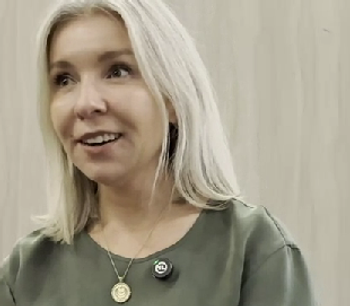
How A Psychoanalyst Brought His Field’s Thinking about Gender and Sexuality Into the 21st Century
This Sigourney Award winner was recognized for his international work in gender and sexuality.
I was recently honored to be a 2022 recipient of the Sigourney Award for internationally recognized work in the areas of gender and sexuality. My publications, which have been translated into many languages, include over 50 peer-reviewed articles, 50 book chapters, more than a score of edited books and a groundbreaking introductory textbook,
The road to this award has been long and arduous but also rewarding. For starters, myearly introductions to psychoanalysis were not inviting. As an openly gay medical school graduate, I was not welcomed in mostprofessional spaces where psychiatrists and psychoanalysts in New York City (my hometown) practiced. Yet, despite experiences of discrimination and prejudice, in my psychiatric training I found insights of psychoanalytically oriented supervisors useful, to both myself and my patients.2 Rather than throwing the baby out with the bathwater—rejecting psychoanalytic concepts because they fostered discriminatory attitudes and behaviors towards individuals like me—I chose to effect change from within. After graduating from the William Alanson White Institute in 1992, I began writing about psychoanalytic theories of homosexuality.
My scholarship is grounded in psychoanalytic approaches open to accepting diversity. It required studying Freud, who was tolerant for his time but by no means “gay-friendly” in the modern sense of the term. His theorizing about homosexuality conflated 2 distinct concepts, now known as sexual orientation and gender identity. The analysts who followed went on to claim they knew the “causes”—and sometimes purported cures—of homosexuality.
Yet, the contemporary scientific position is that the “causes” of any sexual orientation or gender identity are unknown. By showing how theorists use their own biases to fill in knowledge gaps, my work demonstrates how analytic theories reflect cultural biases about human sexuality and gender. This perspective challenges clinicians to rethink what is possible to discover in analytic treatments. For example, analysts and analysands are not discovering what “causes” homosexuality or gender identities in their practices. They are instead coconstructing narratives based on the meanings of those concepts to the 2 participants.
This theoretical work led to my activist work focusing on the harms done by trying to change a person’s homosexual orientation, sometimes referred to as “conversion therapy.” I participated in drafting position statements of the American Psychiatric Association and the American Psychological Association criticizing such activities.3,4 Since 2012, 20 US states and almost 30 countries have banned “conversion therapies,” often citing my work in this area. I have also tried to educate the Federation of State Medical Boards, whose members are charged with adjudicating complaints against conversion therapists.5
Further, throughout my career I have engaged in dialogue with nonpsychoanalytic experts in gender and sexuality. In recognition of this, I served on the workgroup revising sexual and gender diagnoses in APA’s DSM-5. I served as section editor of the DSM-5-TR chapter on gender dysphoria. I was the only psychoanalyst serving on the World Health Organization’s workgroup revising sexual and gender diagnoses in ICD. I played a leadership role in shaping arguments for removing “transsexualism” from ICD-11’s mental disorders section, echoing homosexuality’s removal from DSM-II in 1973.6 A new ICD-11 diagnosis, “gender incongruence,” allows access to needed health care without stigmatizing patients.
Following my DSM and ICD work, although not a child psychoanalyst, I have weighed in on controversies regarding treatment of children and adolescents with “gender dysphoria” (DSM) or “gender incongruence” (ICD).7 My work offers a psychoanalytic stance of “holding complexity” and “tolerating anxiety of uncertainty.” Again, rather than treating unproven psychoanalytic theories of development as facts—pretending to know how anyone develops a gender identity when we donot—I draw attention to countertransferential anxieties and sometimes irrational responses these clinical situations provoke.
Finally, I have beena media spokesperson translating complex psychoanalytic and psychiatric thinking into accessible, jargon-free language to a wider audience. I have been cited and interviewed by journalists in print, television, radio, and internet media outlets seeking clear explanations of complex subjects for their audiences. My scholarly work was cited in the Indian Supreme Court’s decision overturning colonial sodomy laws.8
There is still work to be done. While the psychoanalytic world has become more accepting of gay individuals, it now struggles with ways to integrate a positive view of transgender identity into clinical work and practice. Although I am not the only analyst trying to effect such changes, I am doing my part. Hopefully, with the recognition that comes as a recipient of the Sigourney Award, more people will be paying attention to what I have to say.
Dr Drescher is a clinical professor of psychiatry at Columbia University, Vagelos College of Physicians and Surgeons and a Faculty Member at Columbia’s Division of Gender, Sexuality, and Health. He is an adjunct professor at New York University’s Postdoctoral Program in Psychotherapy and Psychoanalysis and a Training and Supervising Analyst at the William Alanson White Institute.
References
1. Drescher J.
2. Drescher J.
3. American Psychiatric Association. Position statement on conversion therapy and LGBTQ patients. 2018. Accessed March 30, 2023.
4. American Psychological Association. Report of theAmerican Psychological Association Task Force on the Appropriate Therapeutic Response to Sexual Orientation. 2009. Accessed March 30, 2023.
5. Drescher J, Schwartz A, Casoy F, et al.
6. Drescher J, Cohen-Kettenis PT, Winter S.
7. Drescher J, Cohen-KettenisPT,Reed GM.
8. Supreme Court of India. Navtej Singh Johar v. Union of India Ministry of Law and Justice Secretary. September 6, 2018. Accessed March 30, 2023.
Newsletter
Receive trusted psychiatric news, expert analysis, and clinical insights — subscribe today to support your practice and your patients.

















